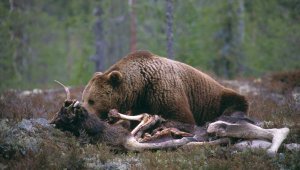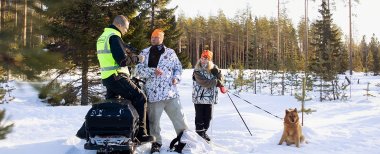The starting point in evaluating the overall conservation status of a species differs from endangerment evaluations. Conservation status is evaluated based on biogeographical regions, which in Finland include Boreal and Alpine regions. Evaluation of the overall conservation status takes into account the stability and expansion rate of the natural distribution area of an animal population, as well as the size of the population, how it is developing, how the animal's required habitat is preserved and what the prediction is for the species' future.
Boreal region
|
Distribution area
|
Population
|
Habitat
|
Prediction for the future
|
Overall conservation status
|
| Wolf |
FV |
U1- |
FV |
xx |
U1- |
|---|
| Wolverine |
FV |
U1+ |
FV |
FV |
U1+ |
|---|
| Lynx |
FV |
FV |
FV |
FV |
FV |
|---|
| Brown bear |
FV |
FV |
FV |
FV |
FV |
|---|
Alpine region
|
Distribution area | Population | Habitat | Prediction for the future | Overall conservation status |
| Wolf |
FV |
U1 |
FV |
xx |
U1 |
|---|
| Wolverine |
FV |
FV |
FV |
xx |
FV |
|---|
| Lynx |
FV |
FV |
FV |
xx |
FV |
|---|
| Brown bear |
FV |
FV |
FV |
FV |
FV |
|---|
Abbreviations
| FV |
Favourable |
| U1 |
Unfavourable-Inadequate |
| U2 |
Unfavourable-Bad |
| plus |
Situation improving |
| minus |
Situation declining |
| xx |
Not known, not evaluated |

